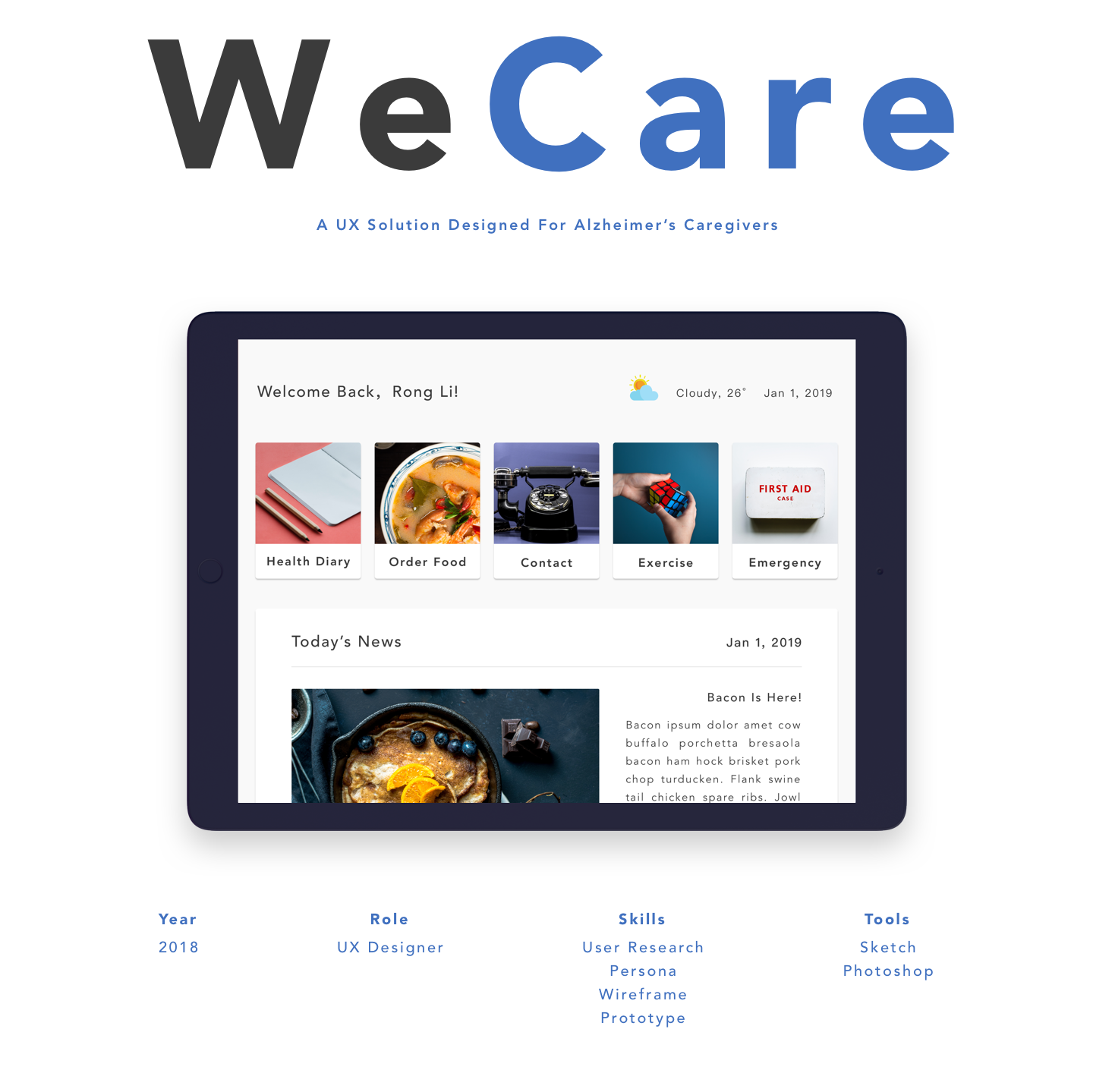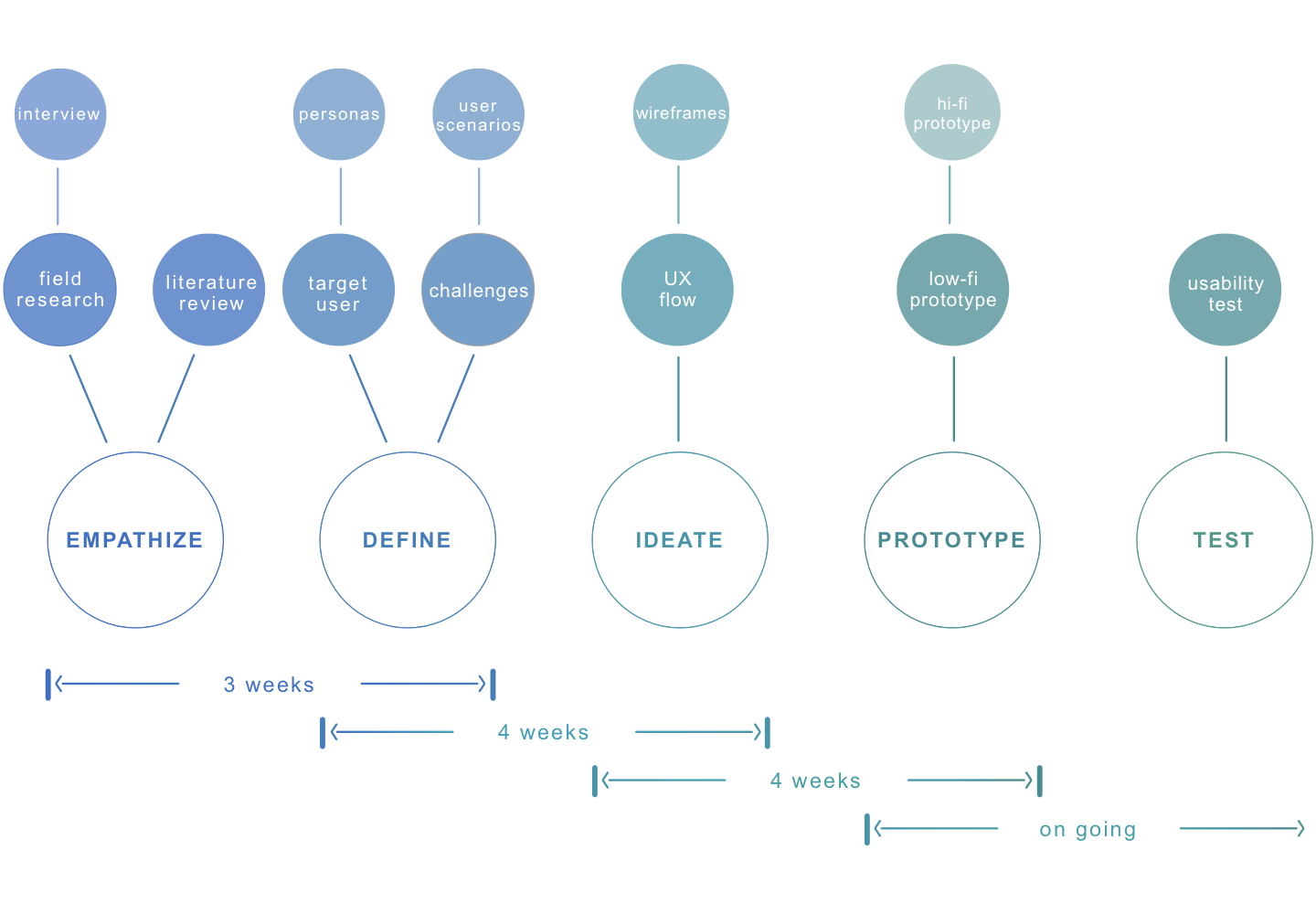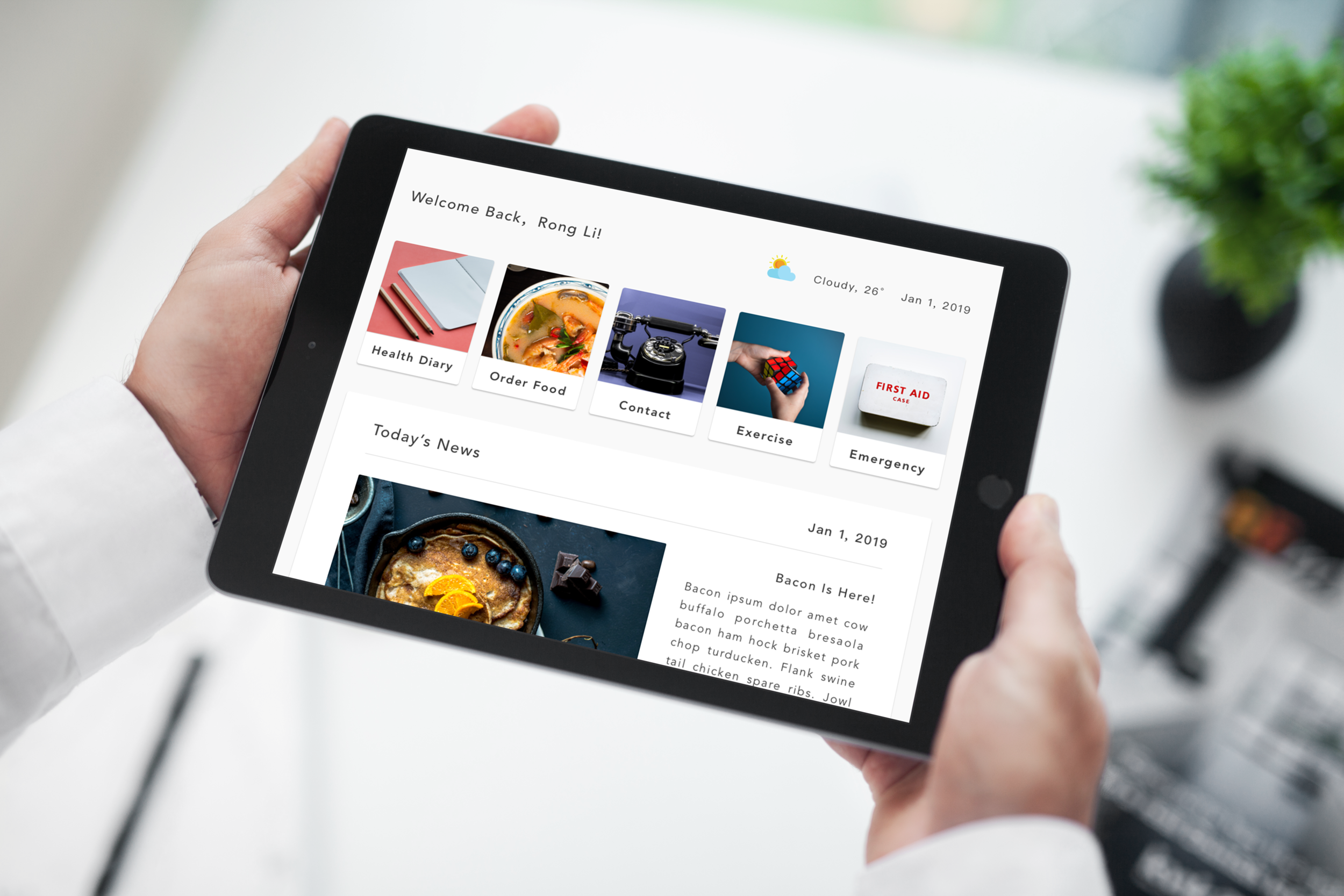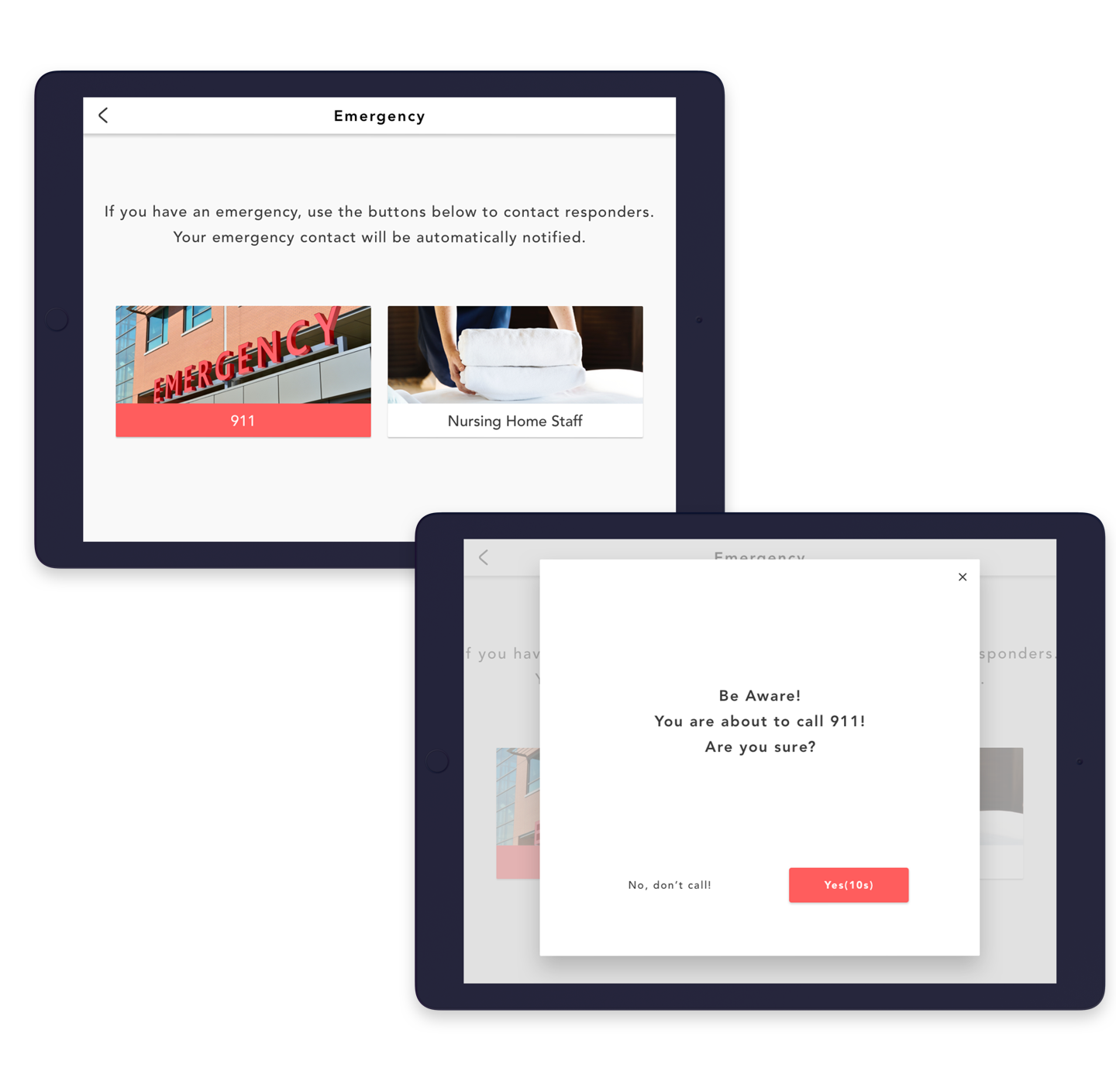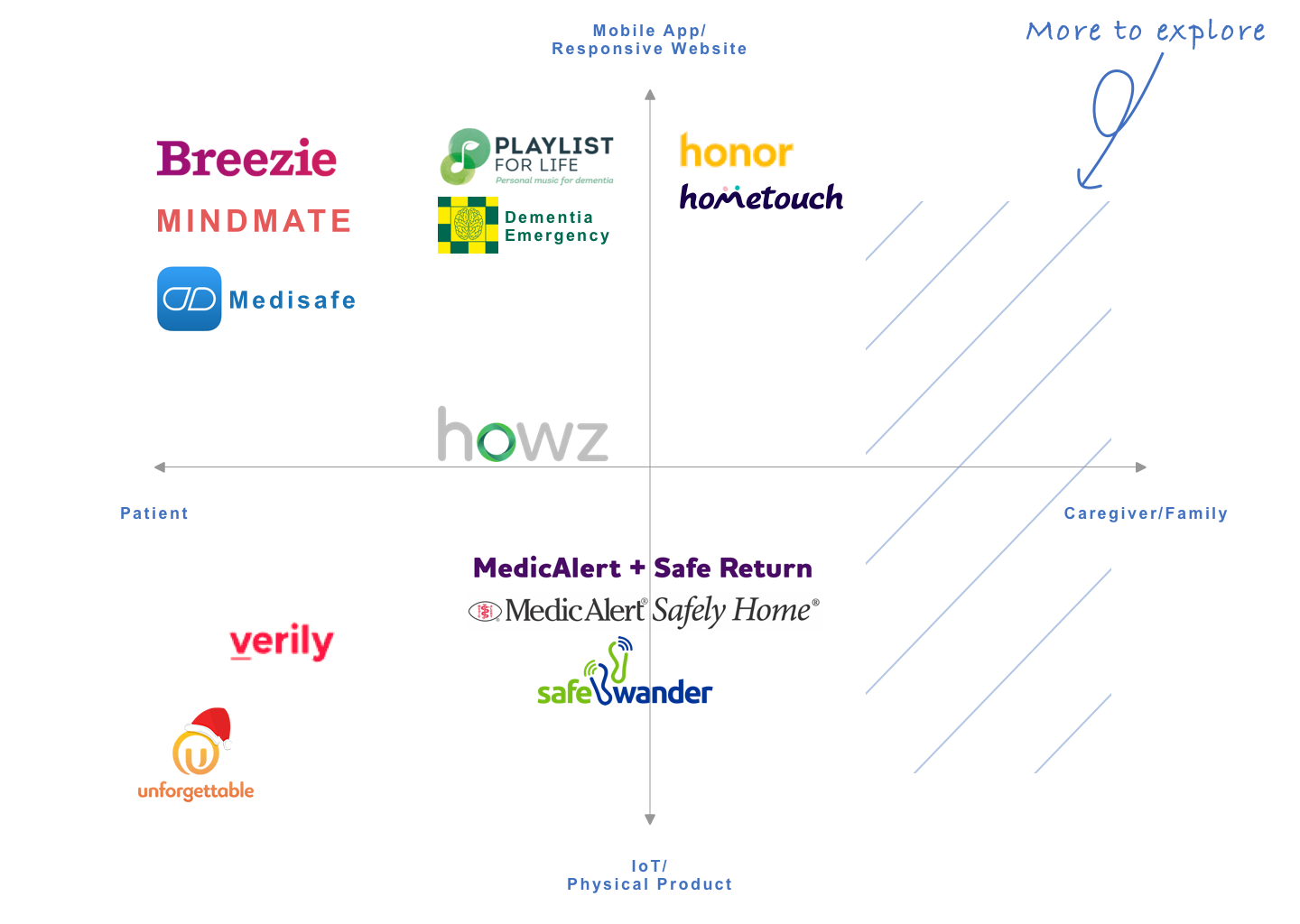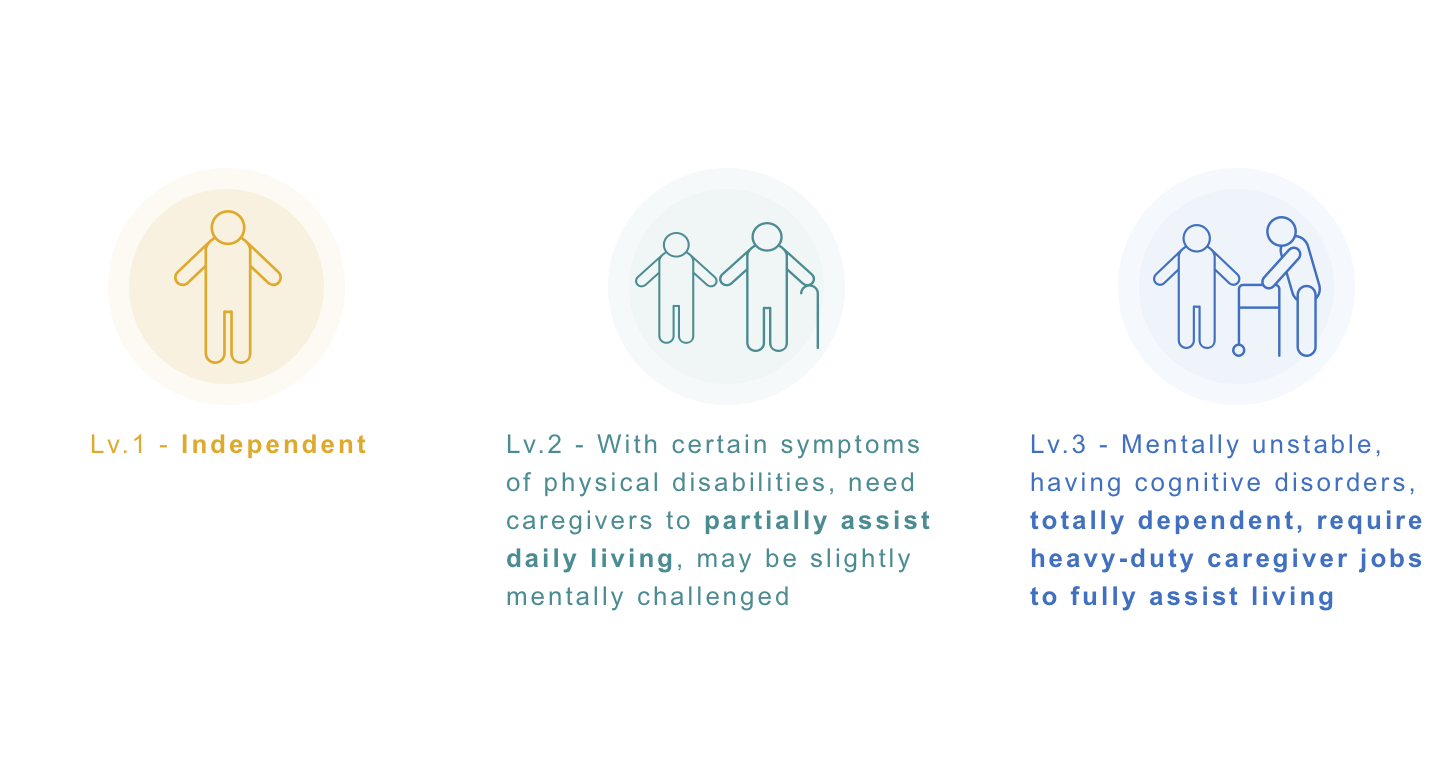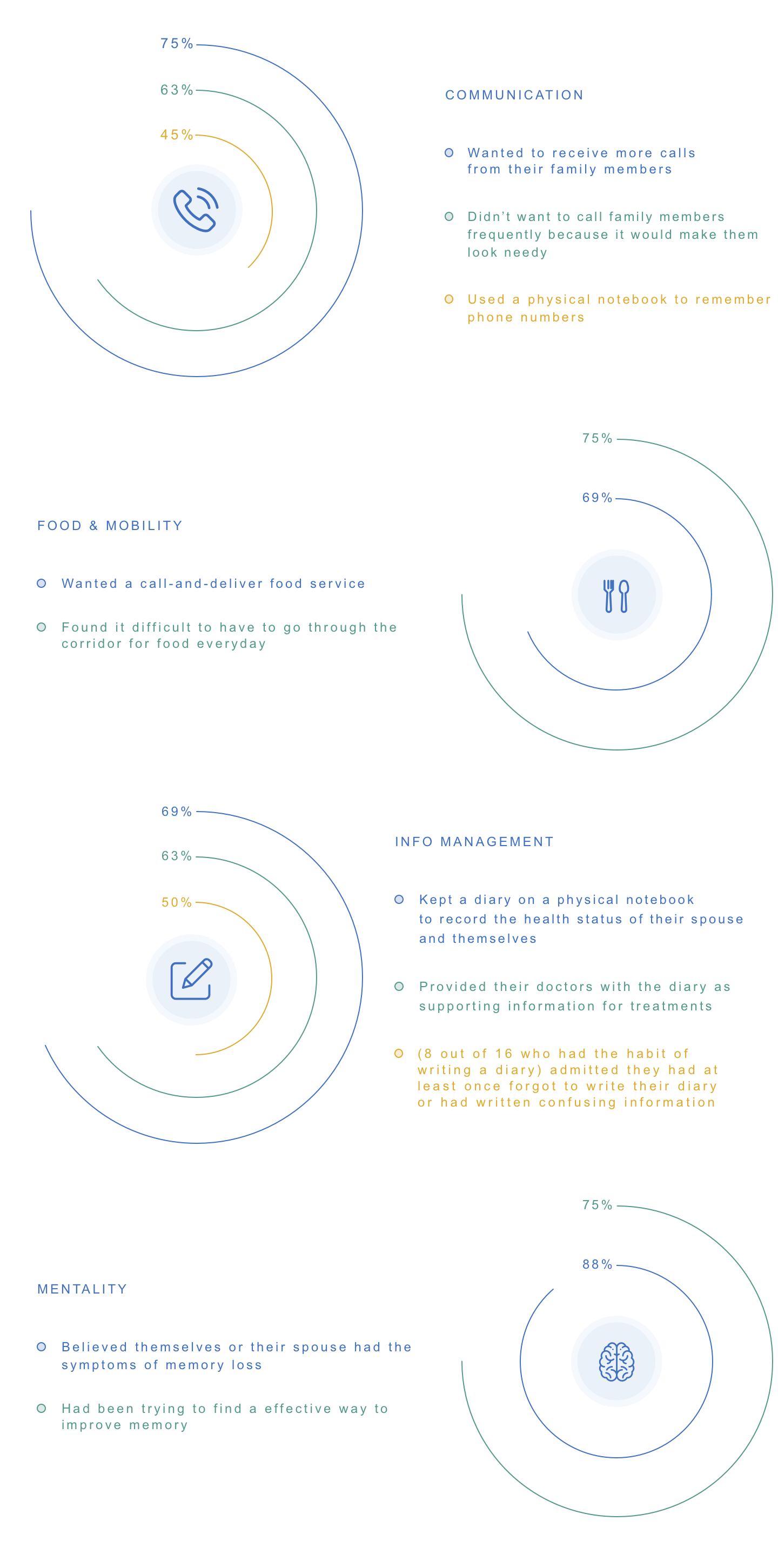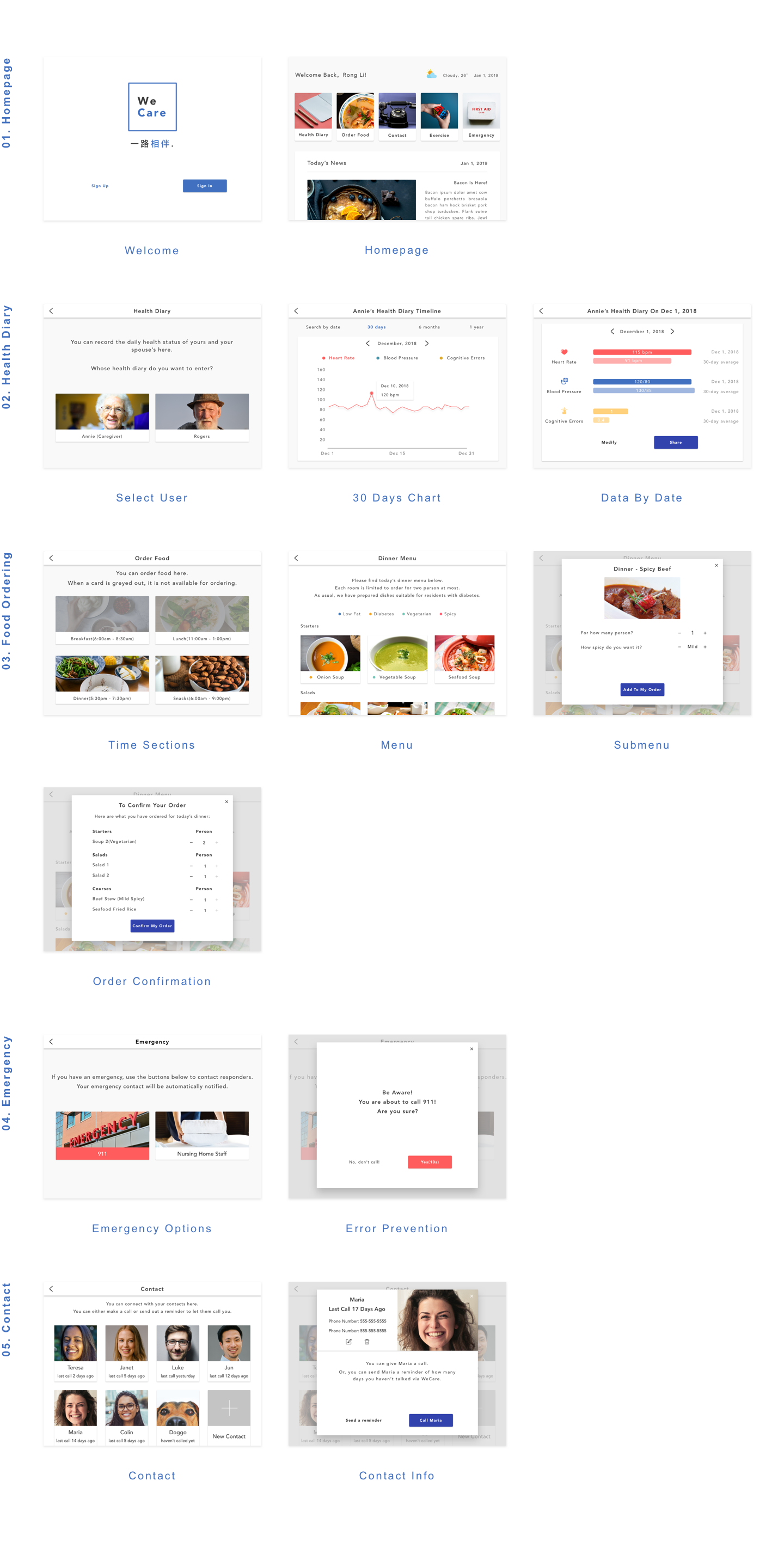Product Features
WeCare is designed to help improve the quality of life of Alzheimer’s sufferers and their family caregivers, who live together at a residential facility.
With the tablet-based solution, the family caregiver can easily order food from the kitchen remotely, call emergency, keep track of the health status of the patient, connect with family and friends without awkwardness and enjoy recreational features.
Food Delivery
WeCare helps its users order food from the kitchen of the residential facility.
There are notes on the menu helping the family caregivers choose healthier food for themselves and the patients. Meanwhile, users are encouraged to send personalized orders with the app.
Emergency Call Out
Caregivers can make an emergency all out with one touch.
Taking into consideration that most of the users are senior people, an error prevention has been designed to prevent the unintentional emergency call.
After choosing to call 911, a 10 seconds countdown timer will be triggered. The user can choose to call off the dialing, or the app will automatically connect the user with an emergency responder in 10 seconds.
The “You-haven’t called-me!” Reminder
Based on my observations, senior people living in a nursing home strongly want to contact with their family. On the other hand, they are afraid of being looking needy.
WeCare can set up an automatic reminder (“Hey! You haven’t called Janet in a while!”). In doing so, senior users may have the machine remind their family to call back without the awkwardness.
Keep Track of Health Data
I have discovered a fact that many family caregivers write a diary to keep track of his/her health data and the health data of the patient.
WeCare provides a more convenient yet powerful way to help keep track of health data. The users can also share their data with their doctors and family members.
In the future, the app should be able to work with IoTs and wearable devices to better monitor users’ health status.
Personal Motivation
I never imagined designing for healthcare. Not before my grandfather was diagnosed with Alzheimer’s after having a stroke.
In my memory, he had been funny, caring, and always optimistic. For the most part of his life, he was known by family, friends and his students as a college lecturer with passionate and humorous teaching styles.
However, the disease changed everything.
At first, his personality slightly changed—he started complaining about things frequently, and losing his hobbies of reading books and writing articles. Not long after, the dementia kicked in, causing his mind irreversibly regressed to a child’s state.
My grandfather is now living in a nursing home in Beijing, alone with my grandmother. My grandmother is taking care of him as a informal family caregiver.
My grandfather has totally become a grumpy man trapped in a degrading mind, cursing his wife daily because he couldn’t recognize her.
“There will be no coming back,” his doctor implied.
As a UX designer, I couldn’t stop thinking about the possibilities of using technology to help with the situation. As a result, I started doing research about how might a well-designed system help people like my grandparents improve the quality of their lives.
Literature Review & Competitor Analysis
There are at least 9.5 million Alzheimer’s sufferers in China, while another million Chinese people are diagnosed with it each year (Fuhrman & Yansong, 2017) .
Alzheimer’s is irreversible, and for now, incurable. The most common symptoms include: memory loss, confused cognition, depression, vascular dementia, problems with movement, and so on (Alzheimer’s Association, 2018) .
Designers and researchers are increasingly investing in developing supportive applications and devices for Alzheimer’s patients and their caregivers recently (Megges, Freiesleben, Jankowski, Haas, & Peters, 2017). Companies and capitals are getting more involved, too.
Some companies have set examples for designing and producing relatively practical supportive solutions (Lazzarin, 2016).
Below are some examples.
The Book Of You is a memories-stimulating app based on tablets. Focusing on dementia sufferers, the app is designed to particularly serve the elderly people.
Honor is a responsive online platform focusing on helping Alzheimer’s sufferers find home caregiver.
Combining mobile app with IoT technology, howz is a home monitoring system designed to help the dementia sufferers live a better, independent life.
Another tablet based application, Breezie, pays its attention to the elders’ social lives and mental health, offering a senior-friendly UX solution of entertainment and daily communication.
Other solutions include (a project heavily involve project design to prevent memory loss), HomeTouch (an online platform of caregiver service), Safely Home (a IoT tracking solution developed by MedicAlert and The Alzheimer’s Society of Canada) , etc.
I’ve made the matrix to show where these solutions locate, reflecting on their features, forms and target users.
Field Research
Although inspiring, the solutions examined above do not necessarily suit the needs of my grandparents.
To identify the specific pain points, I spent 3 weeks visiting the X&T Nursing Home, where my grandparents were living, to conduct a user research.
The nursing home hired a doctor to assess its residents’ independence level. Part of my research and design made a reference to the assessment results.
It was common to see an independent senior living in the nursing home to take care of her spouse, who was mentally/physically(or both) challenged.
Among 30 residents, 12 were Level 1 residents, another 12 were Level 2 residents, and 6 were Level 3 residents(my grandfather was one of them). At least 10 residents(Level 2 or 3) were suffering from diagnosed mental health issues, most commonly the Alzheimer’s.
Something interesting I discovered was that all 12 Level 1 residents chose to live in the nursing home to provide assistance to their spouse (Level 2 or Level 3). Among their spouse, 10 were sufferers of Alzheimer’s(or other mental health issues with similar symptoms) , 2 were physically disabled.
Although there were professional caregivers at the nursing house who can be hired by the residents, the basic payment plan did not cover the caregiver service. It became more expensive for a higher-level resident to hire a full-time/part-time caregiver. For those who only paid their residence fee, no professional caregiver service was provided.
All of the level 1 residents were living with their spouse in the nursing home, playing a role of unpaid, family caregiver, because of “safer environment”, “help from the staff”, “fitness therapy”, “easy access to health care” and most commonly, “too expensive to hire a professional caregiver”.
After spending time observing the residents’ living patterns, talking to them and the staffs of the nursing house, I came to realize that it was almost impossible for me to design a digital solution, if to have the Level 2 and 3 residents as my users. The fact that they lack the essential ability of communication and cognition made it extremely hard for them to use a mobile device.
Instead, the independent residents, who normally had no physical or mental health issue, and were only there to take care of their spouse, had more potential to be the users of a UX solution based on a digital platform.
Interviews and Survey
I spent time talking to 16 residents(all Level 1 residents and 4 Level 2 residents) who were able to communicate. Based on the interviews data, I discovered several challenging problems faced by the residents of the T&H Nursing Home.
Residents had to go through a 150-feet long corridor to reach the dining area daily
Many interviewees believed they lacked communication with family and friends due to different reasons
Some family caregivers(Level 1 residents) wrote diaries or take notes to keep a log of their spouse’s health status
Personas
Challenges
Based on my user research’s results, I’ve discovered quite a few challenges faced by my target users. At this point, I’ve summed up 4 most major challenges for my design to help users conquer.
Information Architecture
Wireframe
Prototype
Click the video below to watch the hi-fidelity prototype of WeCare.
Conclusion & Takeaways
The purpose of this project is not only to design a solution for senior caregivers living in a particular residential facility, but additionally to start a dialogue with people from different backgrounds to improve and develop new solutions for senior people affected by chronic diseases and mental issues.
When I was designing WeCare, I was able to discover so many unnoticed challenges of Alzheimer’s sufferers and their family caregivers’ life. Besides what I have addressed above in this project, there are still other challenges not only faced by Alzheimer’s patients, but also may affect their family caregivers’ quality of life:
Sleeping disorders;
Confusion of time and space;
Problems of expression;
Trouble understanding spatial concepts;
Depression and anxiety.
Due to the limitations of my own skills, experience and perspective, WeCare has been only focusing on building a tablet-based app to help solve some of the most basic problems faced by the target users.
With the development of technology, our life has become more and more “smart”. However, people at their old age and being affected by physical or mental diseases may not be as “tech-savvy” as society might expect. Designers and developers sometimes may take it for granted that we can use technology to help senior people live a better life. However, to achieve such a goal, it takes great efforts to go to the field, to observe, feel, empathize and investigate senior people’s true stories and needs.
We must be careful not to become condescending and arrogant when designing for the vulnerable, unnoticed groups of society.
As for WeCare, more disciplines and technologies are expected to be involved in its future development. Many of the challenges of its users can be better solved with IoTs and wearable devices. Additionally, extra support from healthcare experts and psychologists may also be helpful for designers to better understand the inner worlds of Alzheimer’s sufferers.
Meanwhile, user tests are also needed to further discover the feasibility of the current prototypes and other unnoticed problems of the users.


